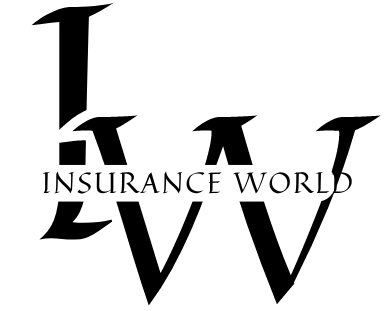Introduction:
Aviation insurance is a specialized form of insurance coverage designed to protect aircraft owners, operators, and aviation-related businesses against a wide range of risks associated with aviation operations. Whether you own a single-engine airplane, operate a fleet of commercial airliners, or provide aviation-related services, aviation insurance is essential for mitigating risks and ensuring financial protection. In this comprehensive guide, we’ll explore everything you need to know about aviation insurance, from understanding its importance to navigating the complexities of coverage options and risk management strategies in the aviation industry.
- Understanding Aviation Insurance:
- Aviation insurance is a unique and complex form of insurance coverage that provides financial protection for aircraft owners, operators, and aviation-related businesses against losses or damages arising from aviation-related risks.
- It covers a broad spectrum of risks, including hull damage, liability risks, passenger injuries, third-party property damage, and loss of income due to aircraft damage or loss.
- Aviation insurance policies can be tailored to the specific needs of aircraft owners and operators, offering coverage options, limits, deductibles, and endorsements to address their unique risks and exposures.
- Types of Aviation Insurance Coverage: a. Aircraft Hull Insurance:
- Aircraft hull insurance provides coverage for physical damage to the aircraft itself, including damage caused by accidents, collisions, fire, theft, vandalism, or other covered perils.It reimburses aircraft owners for repair or replacement costs of the aircraft’s hull, engines, avionics, and other components in the event of damage or loss.
- Aircraft liability insurance provides coverage for bodily injury and property damage liabilities arising from aircraft accidents or incidents, including injuries to passengers, third parties, or damage to third-party property.It protects aircraft owners, operators, and pilots from legal liabilities and financial obligations resulting from aviation-related accidents, including legal defense costs, settlements, and judgments.
- Passenger liability insurance provides coverage for bodily injury liabilities arising from injuries to passengers onboard an aircraft, including medical expenses, pain and suffering, and loss of income or earning capacity.It ensures that aircraft owners and operators are financially protected against lawsuits or claims filed by passengers injured in aviation accidents.
- Hangarkeepers insurance provides coverage for liability risks associated with the storage, maintenance, or servicing of aircraft in hangars or aviation facilities owned or operated by aviation-related businesses.
- It protects hangar owners, operators, and service providers from liabilities arising from damage to aircraft or third-party property while in their care, custody, or control.
- Importance of Aviation Insurance:
- Financial Protection: Aviation insurance provides financial protection for aircraft owners, operators, and aviation-related businesses against the costly consequences of aviation-related accidents, incidents, or liabilities.
- Compliance Requirements: Aviation insurance is mandatory for aircraft owners, operators, and aviation-related businesses to comply with regulatory requirements imposed by aviation authorities, such as the Federal Aviation Administration (FAA).
- Risk Management: Aviation insurance plays a crucial role in risk management for aircraft operations, helping mitigate financial risks, liabilities, and uncertainties associated with aviation activities.
- Factors Affecting Aviation Insurance Premiums:
- Aircraft Type and Value: The type, age, and value of the aircraft can impact aviation insurance premiums, with higher rates for newer, more valuable aircraft or aircraft with higher performance capabilities.
- Pilot Experience and Qualifications: The experience, training, and qualifications of the aircraft pilots, including total flight hours, type ratings, and accident/incident history, can influence aviation insurance premiums.
- Safety Record: The safety record and performance history of the aircraft operator or aviation-related business, including accident/incident rates, safety protocols, and risk management practices, may affect insurance premiums.
- Coverage Limits and Deductibles: The level of coverage selected, including coverage limits, deductibles, and policy terms, can impact aviation insurance premiums, with higher limits and lower deductibles resulting in higher premiums.
- Selecting the Right Aviation Insurance Coverage:
- Assess Risk Profile: Evaluate the specific risks and exposures associated with aircraft operations, including aircraft type, intended use, pilot qualifications, and operational environment.
- Identify Coverage Needs: Determine the types of aviation insurance coverage needed to address your specific risks and liabilities, considering factors such as aircraft value, liability exposure, and passenger capacity.
- Compare Policy Options: Research and compare aviation insurance policies from multiple insurers, reviewing coverage options, premiums, deductibles, and policy terms to find the best fit for your aviation operations.
- Customize Coverage: Tailor your aviation insurance coverage to meet your unique needs and risk tolerance, considering optional endorsements, coverage extensions, and risk management services offered by insurers.
- Seek Professional Advice: Consult with aviation insurance brokers, underwriters, or aviation experts for guidance on selecting the right aviation insurance coverage and managing your aviation-related risks effectively.
- Risk Management Strategies for Aviation Operations:
- Safety Management Systems (SMS): Implement safety management systems to identify, assess, and mitigate aviation-related risks, including safety protocols, training programs, and incident reporting procedures.
- Pilot Training and Education: Provide ongoing training and education for pilots and flight crew members to enhance their skills, knowledge, and proficiency in aircraft operations, safety procedures, and emergency protocols.
- Maintenance and Inspection Programs: Establish regular maintenance and inspection programs for aircraft to ensure airworthiness, compliance with regulatory requirements, and safe operation of aircraft systems and components.
- Emergency Response Planning: Develop comprehensive emergency response plans and procedures for handling aviation emergencies, including aircraft accidents, incidents, medical emergencies, or security threats.
Conclusion:
Aviation insurance is a critical risk management tool for aircraft owners, operators, and aviation-related businesses, providing financial protection against a wide range of risks associated with aviation operations. By understanding the importance of aviation insurance, navigating the complexities of coverage options, and implementing effective risk management strategies, aircraft operators can protect their assets, ensure compliance with regulatory requirements, and promote safety and security in the aviation industry. With proactive risk management and the right aviation insurance coverage in place, aircraft owners and operators can navigate the skies with confidence and peace of mind.

